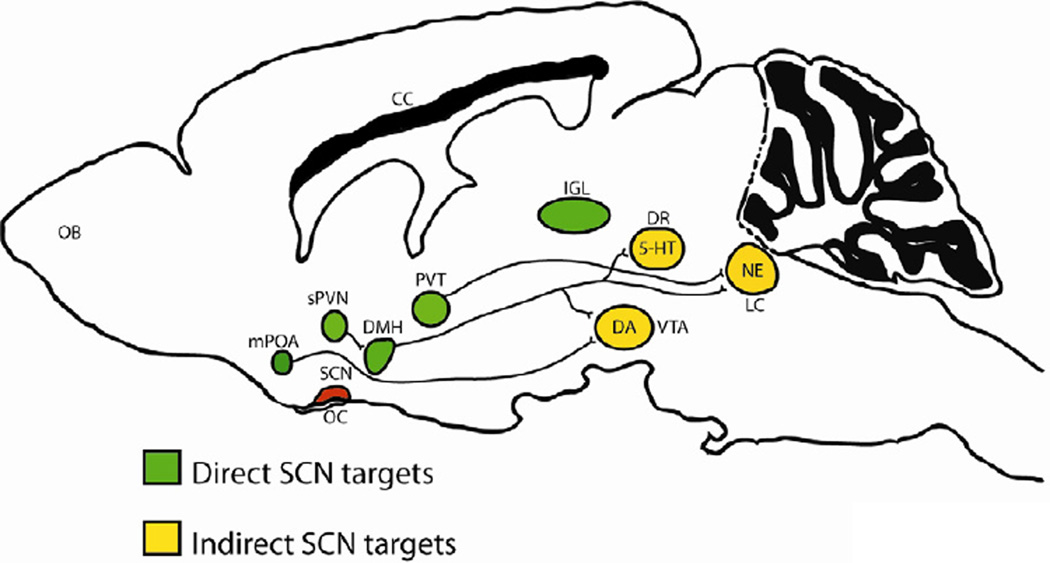Figure 3.
The circadian system regulates many hormones and peptides in the brain and periphery that impact mood and reward. (left panel) The circadian control of the hypothamo-pituitary-adrenal (HPA) axis originates in the SCN which projects to the paraventricular nucleus (PVN) with arginine vasopressin (AVP) synthesizing neurons, causing the release of corticotropin-releasing hormone (CRH). Subsequently, CRH stimulates the synthesis and release of adrenocorticotropin hormone (ACTH) from the anterior pituitary, which travels through the blood stream and stimulates the release of glucocorticoids (GC) from the adrenal gland. Glucocorticoids negatively feedback to multiple sites via interaction with the intracellular glucocorticoid receptor (GR) in order to maintain basal stress hormone levels within a homeostatic range. Rhythmic clock gene expression coordinates incoming hormonal signals to rhythms in local receptor expression at the level of the PVN, pituitary and adrenal gland. (right panel) The hormone leptin is expressed in adipose tissue and is a satiety signal conveying a positive energy balance to the brain. Leptin levels also fluctuate on a daily basis, as clock genes are expressed in adipose tissue, and lead to circadian rhythms in hunger and satiety. Leptin is sleep-inducing and may alter mood by inhibiting orexin neurons in the lateral hypothalamus (LH). An opposing metabolic signal, ghrelin, is released by the stomach to convey a negative energy balance to the brain by stimulating orexigenic Agouti-Related peptide (AgRP)/Neuropeptide Y (NPY)- secreting neurons in the arcuate nucleus of the hypothalamus. Additionally, ghrelin directly stimulates orexinergic neurons in the LH, which induces arousal and feeding behavior. These orexigenic neurons also project directly to dopaminergic neurons in the ventral tegmental area (VTA). Finally, cholecystokinin (CCK) is a circadian regulated peptide that is synthesized in the gut and contributes to feeding behavior, as well as the VTA, which contributes to motivated behavior and reward sensitivity.

